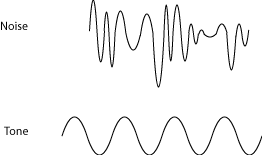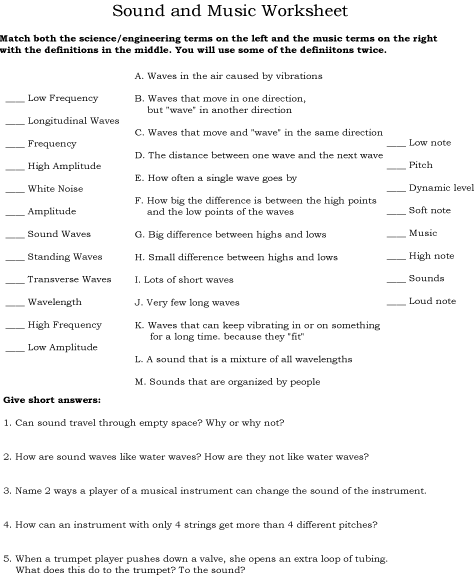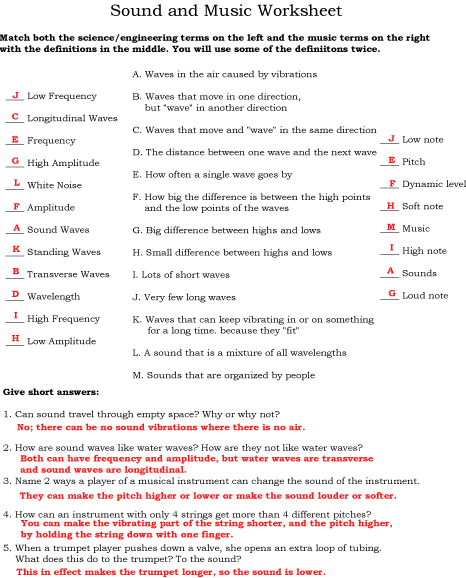| << Chapter < Page | Chapter >> Page > |
Music is the art of sound, so let's start by talking about sound. Sound is invisible waves moving through the air around us. In the same way that ocean waves are made of ocean water, sound waves are made of the air (or water or whatever) they are moving through. When something vibrates, it disturbs the air molecules around it. The disturbance moves through the air in waves - each vibration making its own wave in the air - spreading out from the thing that made the sound, just as water waves spread out from a stone that's been dropped into a pond. You can see a short animation of a noise being created here .
Surf rolling down a beach, leaves rustling in the wind, a book thudding on a desk, or a plate crashing on the floor all make sounds, but these sounds are not music. Music is sound that's organized by people on purpose, to dance to, to tell a story, to make other people feel a certain way, or just to sound pretty or be entertaining.
Music is organized on many different levels. Sounds can be arranged into notes , rhythms , textures and phrases . Melodies can be organized into anything from a simple song to a complex symphony. Beats , measures , cadences , and form all help to keep the music organized and understandable. But the most basic way that music is organized is by arranging the actual sound waves themselves so that the sounds are interesting and pleasant and go well together.
A rhythmic, organized set of thuds and crashes is perfectly good music - think of your favorite drum solo - but many musical instruments are designed specifically to produce the regular, evenly spaced waves that we hear as particular pitches (musical notes). Crashes, thuds, and bangs are loud, short jumbles of lots of different wavelengths. The sound of surf, rustling leaves, or bubbles in a fish tank are also white noise , the term that scientists and engineers use for sounds that are mixtures of all the different wavelengths (just as white light is made of all the different wavelengths, or colors, of light).

A tone (the kind of sound you might call a musical note) is a specific kind of sound. The vibrations that cause it are very regular - all the same size and same distance apart. Musicians have terms that they use to describe tones. But this kind of (very regular) wave is useful for things other than music, so scientists and engineers also have terms that describe tonal sound waves. It can be very useful to know both the scientific and the musical terms and how they are related to each other.
For example, the closer together the waves of a tonal sound are, the higher the note sounds. Musicians talk about the pitch of the sound, or name specific notes , or talk about tuning . Scientists and engineers, on the other hand, talk about the frequency and the wavelength of the sound. They are all essentially talking about the same thing. The scientific terms aren't necessary for the musician, but they can be very helpful in understanding and talking about what's happening when people make music.




Notification Switch
Would you like to follow the 'Sound, physics and music' conversation and receive update notifications?